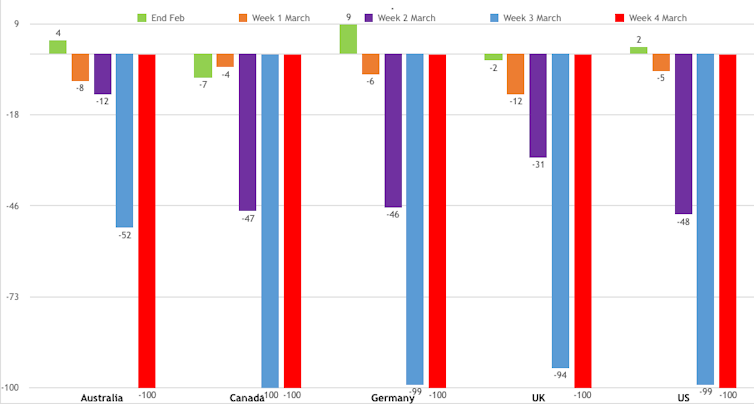
There has been no shortage of headlines sounding the death knell for our town centres over recent years as they continue to suffer from the effects of growth in online shopping, government policy and now the pandemic. But while concerns over the future of town centres is nothing new, neither are the changes that town centres are experiencing.
Changes that affect industries, technologies and the way land is used – which in turn impact on the economy – have impacted communities for decades, particularly in smaller towns. From the loss of manufacturing to new industries and ways of working, towns have had to adapt to survive. And some small towns have been leading the way in reinventing their economic bases by using other assets to spur on their local economies.
Culture as a catalyst
One such example is Wigtown, Scotland’s National Book Town. Following the loss of a distillery and a creamery in the 80s and 90s respectively, Wigtown secured its designation as National Book Town in 1998. This acted as a catalyst for regeneration and inspired the creation of the annual Wigtown Book Festival which now attracts more than 20,000 visitors to the area and brings more than £4 million to the local economy.
Other Scottish towns have also been bestowed with cultural accolades. West Kilbride in Ayrshire, a once thriving mill town, is Scotland’s first accredited Craft Town and winner of a Creative Place Award in 2012. Dumfries recently became home to a new National Centre for Children’s Literature and Storytelling which aims to “establish itself as an international visitor attraction contributing to the regeneration of the town and region and providing Scotland with a world class tourism resource”. And Huntly in Aberdeenshire has attracted artists from all over the world for residents thanks to the Deveron Projects initiative set up in 1995 to connect artists, communities and places.
In England, Farnham recently became the country’s first World Craft Town and only the third region in Europe to receive World Craft City status. Recent research estimates that the value of craft to Farnham and the surrounding area is already in excess of £50 million.
With the aim of building on Wigtown’s success, plans are being drawn up for an open competition to create further National Towns of Culture across Scotland as proposed in the SNP’s manifesto. Suggestions include Scotland’s National Live Music Town, Folk and Trad Town, or Scotland’s Visual Art Town.
Numerous towns could be in the running to become a musical town. It has been suggested that Ullapool could be a frontrunner, after playing host to the Loopallu festival for 15 years, as could Stornoway, the host of the international Hebridean Celtic Festival (HebCelt). And of course, being home to Jimmy Shand and The Proclaimers, Auchtermuchty could equally be in with a shout.
Making the most of local assets
Now may be the ideal time for small towns to make the most of their local assets, whether that is cultural or otherwise. Research has shown that some smaller towns have actually fared much better than larger cities during the pandemic as the importance of local has been emphasised. They have experienced fewer reductions in overall footfall and there has been an increase in footfall in some small towns as consumers look to stay local and avoid using public transport.
A report from Sustrans has recommended capitalising on the increased use of smaller high streets as a way to economic recovery. It highlights that this presents an opportunity to invest in other elements unique to these areas, arguing that “re-establishing the role of a high street as a hub for social connection and reinforcing and celebrating its roots and unique character could go a long way to encourage people to stay local and spend their money where they live.”
Lessons from the US
Research from the US has also shown how small towns can succeed by reinventing themselves through emphasising their existing assets and distinctive resources. Following the loss of various industries, these communities have moved away from trying to attract major employers as a way of attracting talent. Many have moved towards investment in creative infrastructure rather than physical infrastructure to make their communities more attractive to residents and businesses.
Following increased suburbanisation and growth in out of town retail, Paducah in Kentucky, for example, changed its approach to economic development by focusing on developing and retaining the historic integrity of the Renaissance Area, which includes the LowerTown Arts District, the historic downtown, and the riverfront. Paducah’s approach aimed to develop a cohesive identity around its core assets: art, the Ohio River, and history. In 2013, the United Nations Educational, Scientific and Cultural Organization (UNESCO) designated Paducah the world’s seventh City of Crafts and Folk Art.
While all the case study towns in this research drew on different assets, several successful tactics were identified that other communities can use:
- Identify and build on existing assets
- Engage all members of the community to plan for the future
- Take advantage of outside funding
- Create incentives for redevelopment, and encourage investment in the community
- Encourage cooperation within the community and across the region
- Support a clean and healthy environment.
Small towns leading the way?
All these small towns are exemplars of community-led regeneration and illustrate how drawing on unique local assets can be a real catalyst for growth. Perhaps the bigger towns and cities should be looking to their smaller counterparts for lessons on how to succeed in an ever changing world.
If you enjoyed this article, you may also like some of our previous posts:
- Are ‘dark stores’ bringing some much needed light to the high street?
- New year, new high street: it’s time to reshape our town centres (part one)
- New year, new high street: it’s time to reshape our town centres (part two)
Follow us on Twitter to see which topics are interesting our research officers and keep up to date with our latest blogs
























You must be logged in to post a comment.